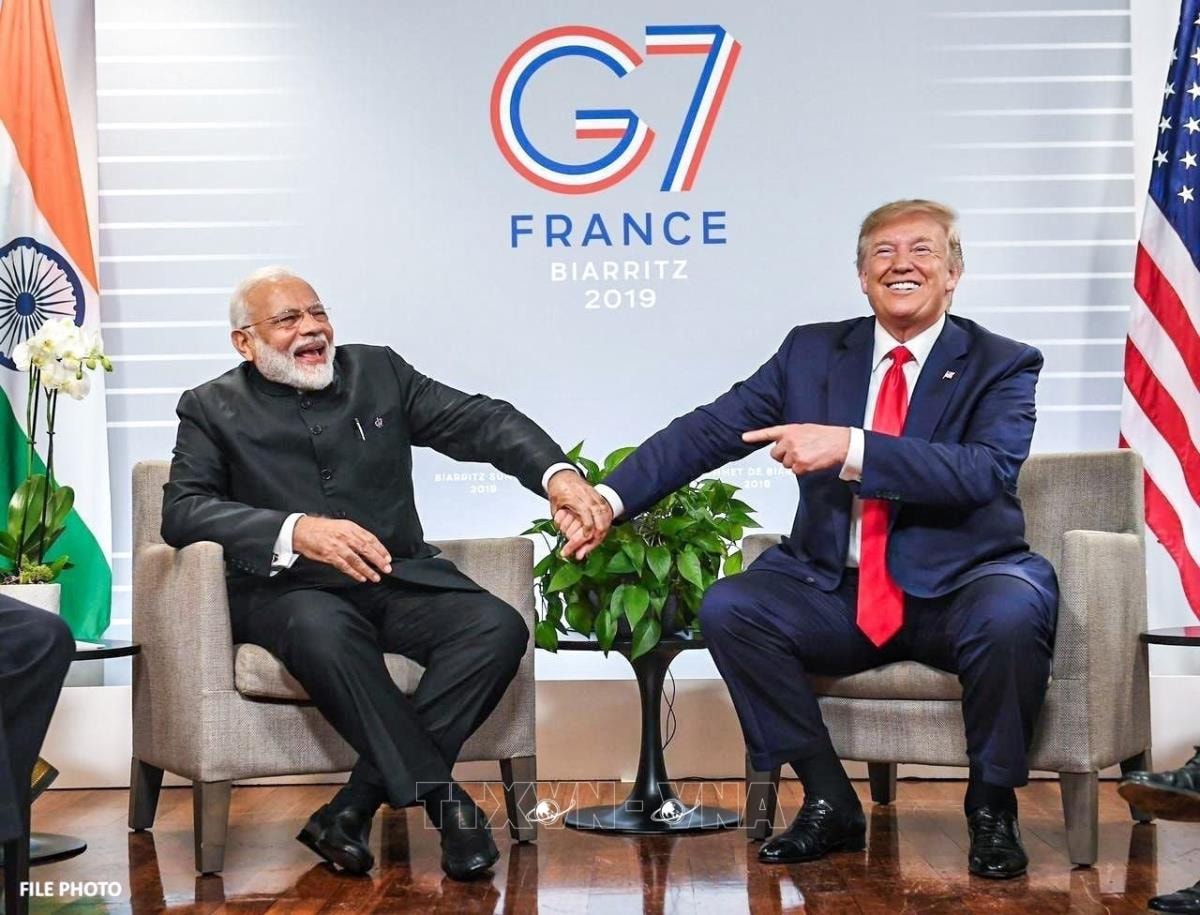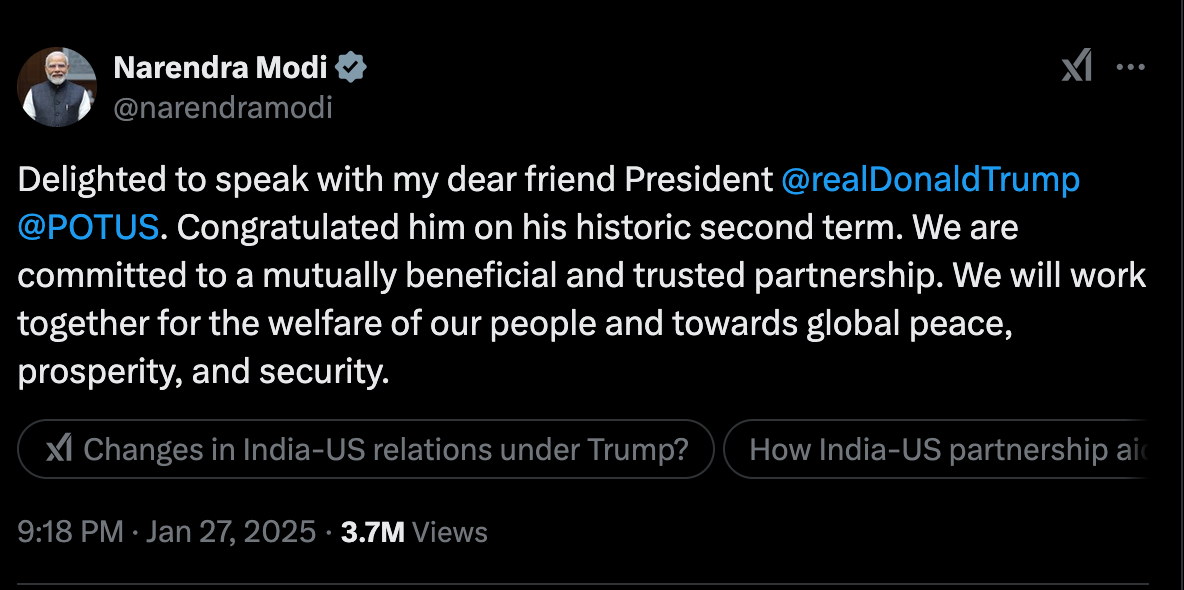New US President Donald Trump said Indian Prime Minister Narendra Modi is expected to visit the US next February.

Indian Prime Minister Narendra Modi is expected to be one of the first foreign leaders to meet US President Donald Trump, after the two spoke by phone on January 27. During the call, the two leaders reaffirmed their commitment to building a “trusted and mutually beneficial partnership”, with Trump stressing the importance of India increasing its purchases of security equipment from the US.
In a statement released the same day, the White House described the phone call between the leaders of the US and India as “productive”, focusing on discussions on expanding cooperation on a range of global issues, including security in the Indo-Pacific region, the Middle East and Europe. The two leaders also discussed immigration and working towards a fair bilateral trade relationship. The US is currently India’s largest trading partner, with India’s trade surplus with the US reaching $32 billion out of a total turnover of about $118 billion in 2023-2024.
After a phone call, new US President Donald Trump said Indian Prime Minister Narendra Modi could visit the US in February.
Speaking to reporters on Air Force One as he returned to Andrews from Florida, Mr. Trump said: “I had a long conversation with him (Indian Prime Minister Narendra Modi) this morning. He will be coming to the White House next month, probably February. We have a very good relationship with India.”
Prime Minister Modi also shared on social network X: “It was a pleasure to chat with my dear friend, President Donald Trump. Congratulations on his historic second term. We are committed to building a partnership of trust and mutual benefit. Together we will work for the benefit of our people and for global peace, prosperity and security.”

Trump-Modi Relationship: Challenges and Opportunities
During his first term as US President, Mr Trump had a close relationship with Mr Modi, but during the election campaign, Mr Trump criticized India as a “major abuser” in trade and vowed to impose tariffs on global imports to correct this imbalance.
In addition, Mr. Trump also threatened to impose high tariffs on the BRICS bloc - of which India is a founding member - if the bloc creates a new currency to compete with the USD.
In the call on January 27, the White House said Mr. Trump emphasized the importance of India increasing its purchases of security equipment made in the United States and promoting a fair trade relationship.
India, seen as a key strategic partner of the US in dealing with the rise of China, also confirmed that the two leaders discussed issues such as technology, trade, investment, energy and defence. Both agreed to maintain communication and meet at the earliest.
The White House statement added that the two leaders reaffirmed their commitment to the Quad grouping (the alliance between the US, India, Australia and Japan). India is expected to host the Quad leaders' summit this year.
Challenges in US-India relations
Trade and immigration are certainly on the Trump administration’s agenda for India, and the impact will depend on how India responds to Trump’s demands and how the debates on these issues play out in Washington, said Tanvi Madan, an India expert at the Brookings Institution in Washington.
Madan also said India expects the US to change its stance on its close ties with the Russian Federation, but for the time being, New Delhi still faces US sanctions against Moscow over the war in Ukraine.
The new US president told reporters that he believed the Indian prime minister “will do the right thing” in taking back illegal Indian immigrants in the US. In a meeting with the Indian foreign minister last week, US Secretary of State Marco Rubio also stressed the desire to “solve the issues of illegal migration”.
According to Bloomberg News, the US and India have identified about 18,000 Indian immigrants who are in the US illegally.
Despite his pledge to crack down on illegal immigration, Trump has also left the door open for legal migration of skilled workers – an area where India leads with its huge IT workforce, accounting for the majority of H-1B visas issued by the US.
On the Indian side, speaking after Mr. Trump's inauguration, the country's Foreign Minister, Mr. S. Jaishankar, said New Dehli wants the talents and skills of Indians to have maximum opportunities globally, but India is also firmly opposed to illegal migration.
According to External Affairs Minister S. Jaishankar, if Indian citizens are abroad illegally, and if New Dehli is sure that they are Indian citizens, New Dehli is always ready to take them back.